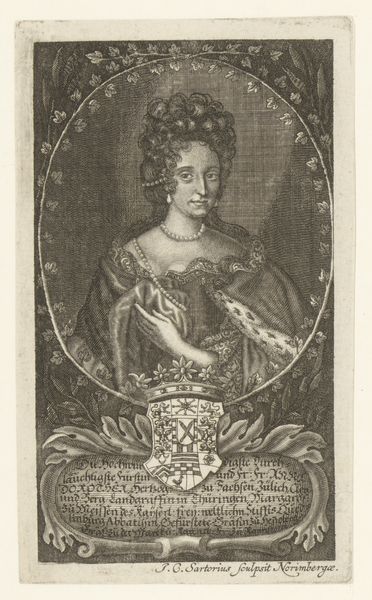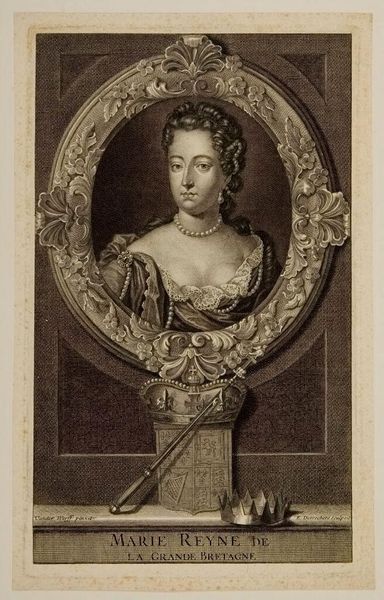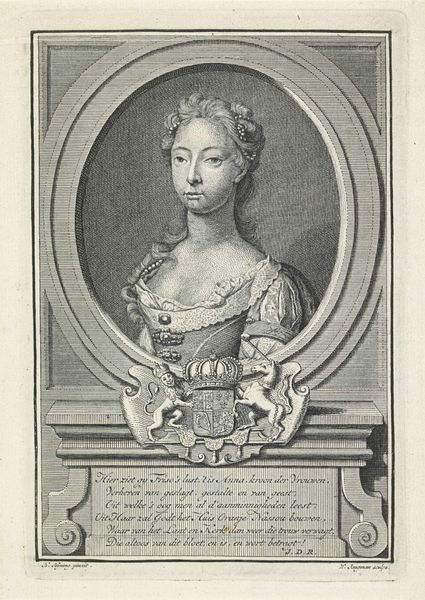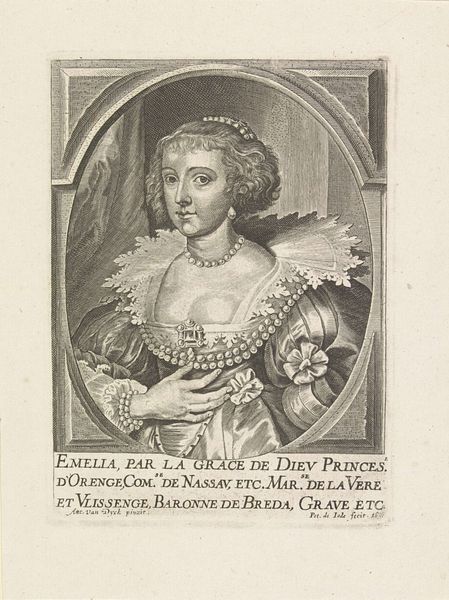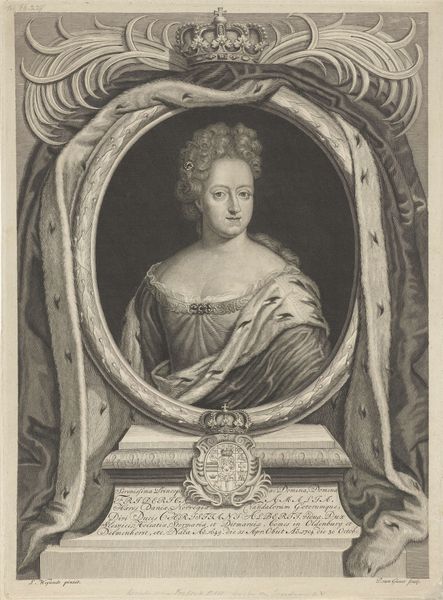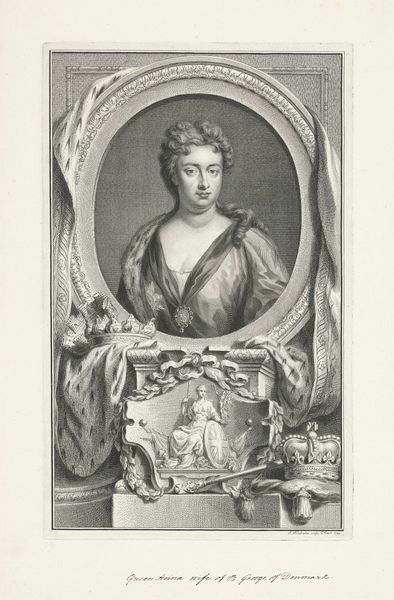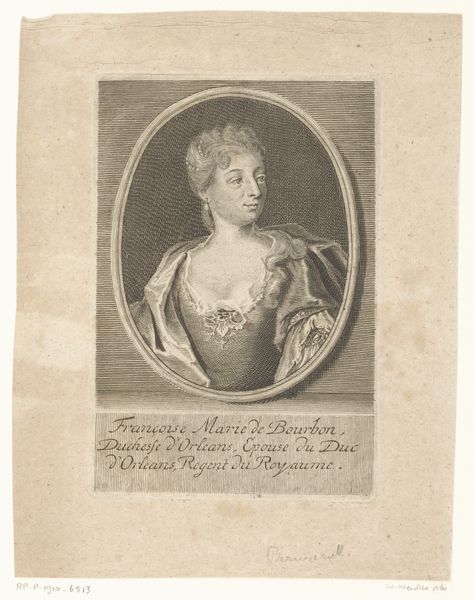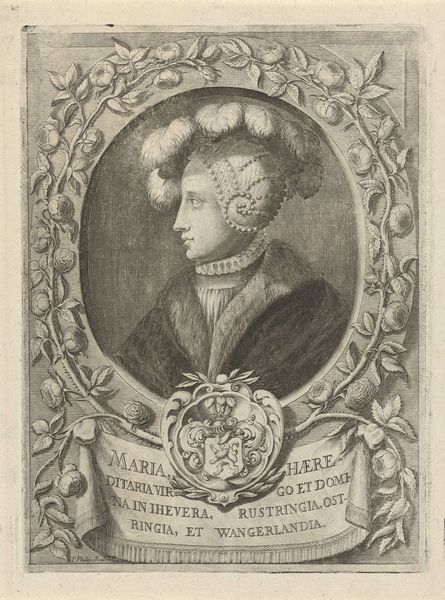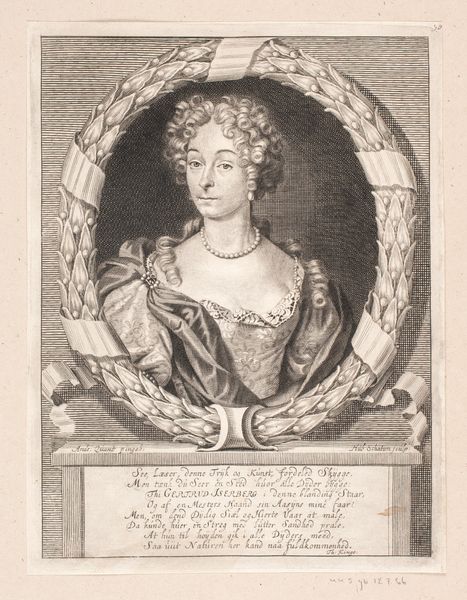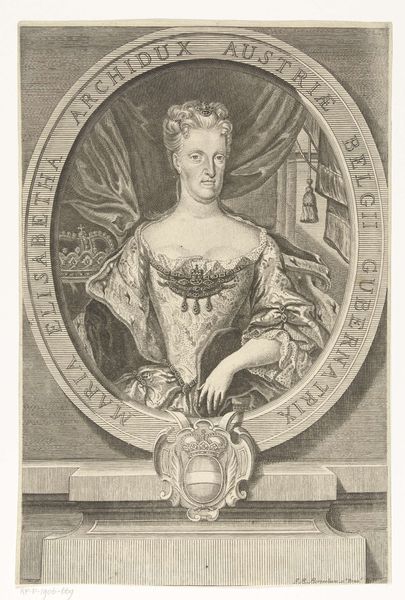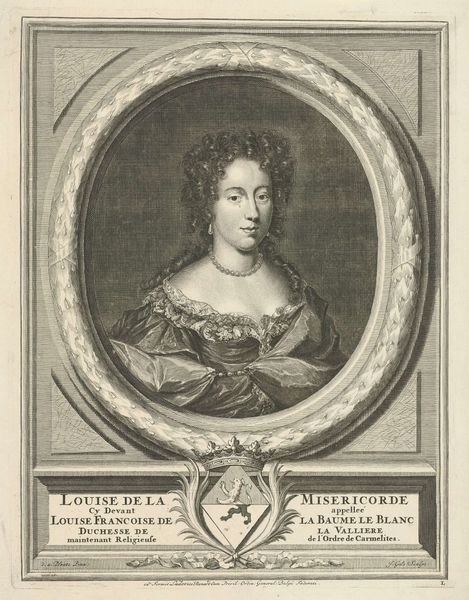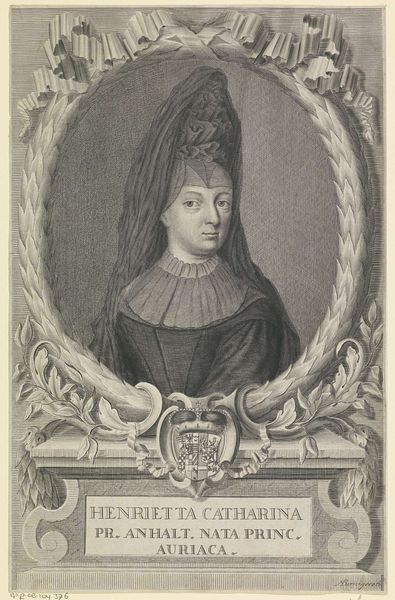
engraving
#
portrait
#
baroque
#
history-painting
#
engraving
Dimensions: height 151 mm, width 112 mm
Copyright: Rijks Museum: Open Domain
Curator: This engraving captures Anna van Hannover, Princess of Orange. It’s attributed to the period between 1735 and 1767 and offers us a glimpse into the visual language used to portray royalty in that era. Editor: The sheer ornamentation of it strikes me. All the drapery and detailing... It’s like a stage, meticulously arranged to project power. I wonder how much of Anna’s own identity shines through. Curator: The oval frame within the print feels significant; it is common to use this shape as an eye, so this artwork really looks at our historical gaze to this female figure, or a kind of self-image of power from within the figure. This form evokes classical cameos, imbuing her image with historical weight and continuity with traditions of depicting powerful female figures. Note the symbolism worked into her garments as well, which speak volumes to courtly virtues like loyalty and generosity. Editor: The symbols certainly carry cultural weight. Royal portraiture functioned to solidify a social order, reinforcing ideas of status. It's intriguing how Anna herself is positioned within this narrative—the details around her seem intended to dictate a controlled visual reception rather than encourage emotional availability. Does her positioning play into pre-conceived concepts of female agency or duty? Curator: Those concepts were almost inescapably bound in that moment, of course, when courtly status relied so much on projecting familial lineage, wealth, piety. It may seem suffocating by modern standards, but she also inhabited that role strategically to project an image. In that period of Dutch history, she was one of the great collectors, and great patrons of the arts. This imagery, then, shows us continuity across periods, and even allows for glimpses of psychological understanding within those traditions. Editor: It’s important to contextualize figures like Anna within the limitations and the possibilities of their time. Even through these seemingly restrictive portraits, we glean an understanding of the push and pull between the constraints of power and expressions of the individual. Curator: Exactly, seeing her, in the printmaking, and her cultural impact in that moment, allows us to more effectively see her, or at least visualize our connection to the history. Editor: Precisely. And by grappling with the portraiture’s symbolism, hopefully, it opens doors into considering agency through the intersectional issues present during that era.
Comments
No comments
Be the first to comment and join the conversation on the ultimate creative platform.

